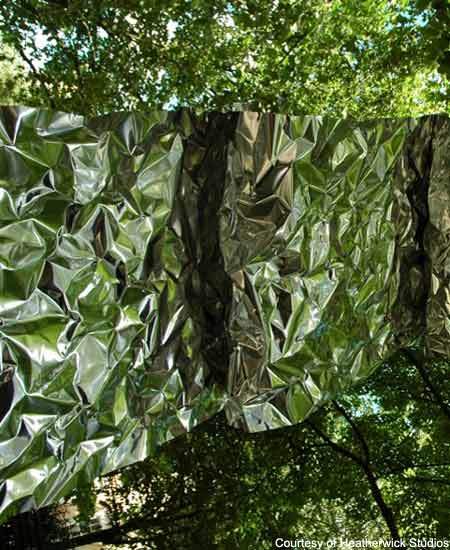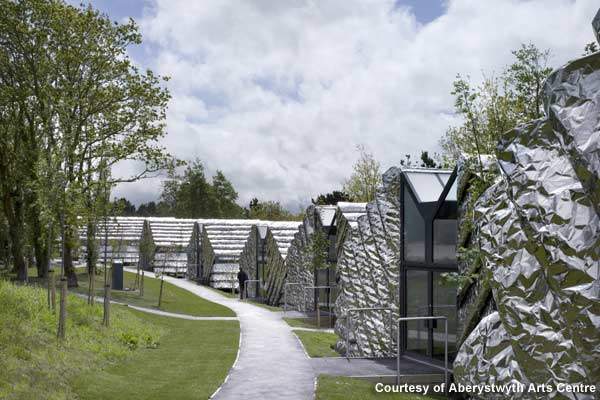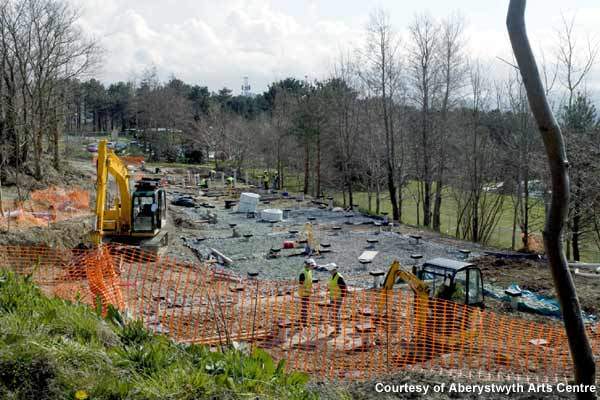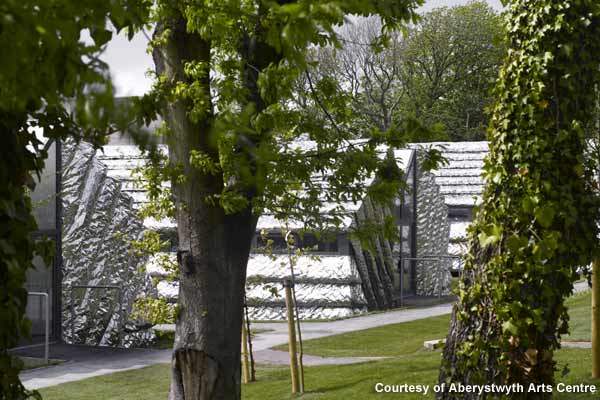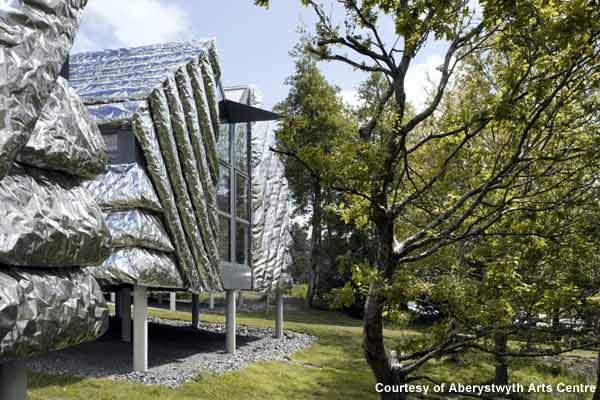In 2005 the Aberystwyth Arts Centre, a department of Aberystwyth University, developed a plan to produce 16 starter units for small business arts enterprises to encourage commercial enterprise in the area.
The project, it was decided, should be constructed as many units, instead of just a single block, on a wooded plot near the main campus. Consequently the project was put forward into a design competition for architects to make suggestions for the innovative project.
Aberystwyth Arts Centre is the largest and most successful in Wales with a turnover of €5.5m a year offering a mix of arts programming, contemporary exhibitions and events for the local area and the wider region. The development of the new Creative Arts Business (CAB) units (10m × 8m × 5m) was intended enable the centre to develop its role as a focus for the development of creative businesses, products and activity.
The objective was to offer a series of business units / studios on the campus of varying and flexible sizes to accommodate a wide range of creative businesses, arts development agencies, artists and craft workers. The mix of businesses is a unique feature of this development with both new and established occupants interacting to realise their economic and creative potential.
Construction work on the project began in 2007 and was completed by 2009. The units were officially opened on 21 May 2009, and all the 16 units have been occupied.
Creative arts unit design
Heatherwick Studio of King’s Cross in London won the competition to design high-tech visually aesthetic, functional and low-cost facilities for 16 start-up arts businesses wishing to locate at the Aberystwyth Arts Centre on the Aberystwyth University campus.
The decision was made early on not to spoil the woodland of the site proposed for the project by producing a single block. Instead Heatherwick decided to intersperse eight smaller buildings (80m² each) between the trees. The buildings basically consist of simple timber-framed sheds (produced from sustainable timber), which are then divided down the middle and pulled apart to provide light, ventilation and a shared entrance area for each dual unit.
Heatherwick studio researched, developed and ordered a special stainless steel metal cladding / coating system for the buildings. Stainless steel is robust and resistant to corrosion (especially important as Aberystwyth is relatively wet and also a seaside resort) but expensive (although not as expensive as titanium which has been used on various well-known buildings in the past).
The cladding metal sourced was the thickness of cooking foil (0.127mm) making it affordable, but easily crinkled. The cladding had no structural rigidity and provides little insulation. These problems of the cladding were overcome during installation by crinkling it in a prearranged manner and then spraying CFC-free insulation foam on the back of the crinkled surface to give the panels the properties of rigidity and insulation.
Panelling produced in this way accommodates architectural details such as eaves and windowsills and has a non-uniformity that reflects the woodland leaves and parts of sky in its multifaceted surface to give a natural multihued surface.
The average area of the units is 35m², with interiors designed to allow access to the disabled.
Finance and construction
The project was funded by support from the Arts Council of Wales Lottery Fund, the Welsh Assembly Government and Aberystwyth University.
The project management contract was undertaken by Heatherwick Studio Construction (building arm of the design practice).
Groundwork / foundations on the 0.9-hectare site were undertaken by ELL Hughes & Son of Aberystwyth and the prefabricated structures were supplied and installed by Lowfield Timber Frames of Welshpool.
Residents of the scheme
The CAB scheme attracted a lot of interest for interested organisations such as Honno Books, and Creu Cymru, the National Development Agency for Theatres and Arts Centres in Wales. The much-famed painter Mary Lloyd Jones also became a tenant of the unit.
Three of the units are used for the Arts Centre’s Artists in Residence scheme, which offers 12 visual and applied artists the opportunity to develop their work during three-month-long residencies (funding provided from the Esmée Fairbairn Foundation for artists from the UK and Wales Arts International for overseas artists).

